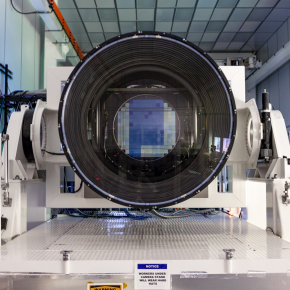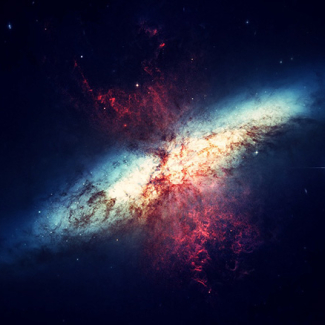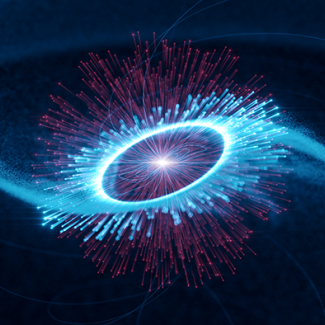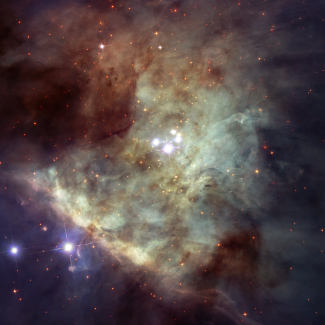
The world’s largest digital camera for astronomy will soon be ready to observe the sky
The recently assembled LSST1 camera is now ready to make the trip from the SLAC National Accelerator Laboratory in the United States to the Vera C. Rubin Observatory2 in Chile, where it will be installed in May 2024. The camera, which has a resolution of 3.2 billion pixels and is the largest ever built for astronomy3 , took nearly two decades to create and involved hundreds of scientists across the globe, including a number of CNRS teams4 . For the next ten years, the camera will observe the southern night-sky on a daily basis, taking 800 photographs per night, each covering a surface equivalent to 40 times that of the Moon. It has two objectives: to study and create a “static” 3D map of the observable universe, and to monitor “transient” cosmic phenomena.
As historic partners, SLAC called on CNRS scientists to contribute to the electronic system at the focal plane of the camera, as well as to help design and build its filter exchange system, which will automatically change the camera’s five colour filters—each weighing 24-38 kgs—5-15 times per night. By measuring the quantity of light emitted by night-sky objects, and by converging the images taken through the different filters, it will make it possible to precisely determine their position and distance in relation to the Earth. Other CNRS scientists helped develop the computing infrastructure5 for the quantitative and qualitative data analysis of the gigantic trove of images that will be collected from the 17 billion observable stars and 20 billion observable galaxies. The goal of this painstaking effort is to create the most comprehensive catalogue of data on the universe.
Why collect such an amount of data? To better understand dark energy, which has been identified as the motor driving the accelerating expansion of the universe, and to conduct advanced research on dark matter, two mysterious substances that make up more than 95% of the cosmos. Data relating to the transient sky will be made public in almost real time, and will notably allow the scientific community to detect potential asteroids posing a danger for our planet.
The LSST camera will be delivered in May 2024 at the Vera C. Rubin Observatory in the Andes Mountains in Chile to be installed on its telescope6 . The first images are expected in the spring of 2025.
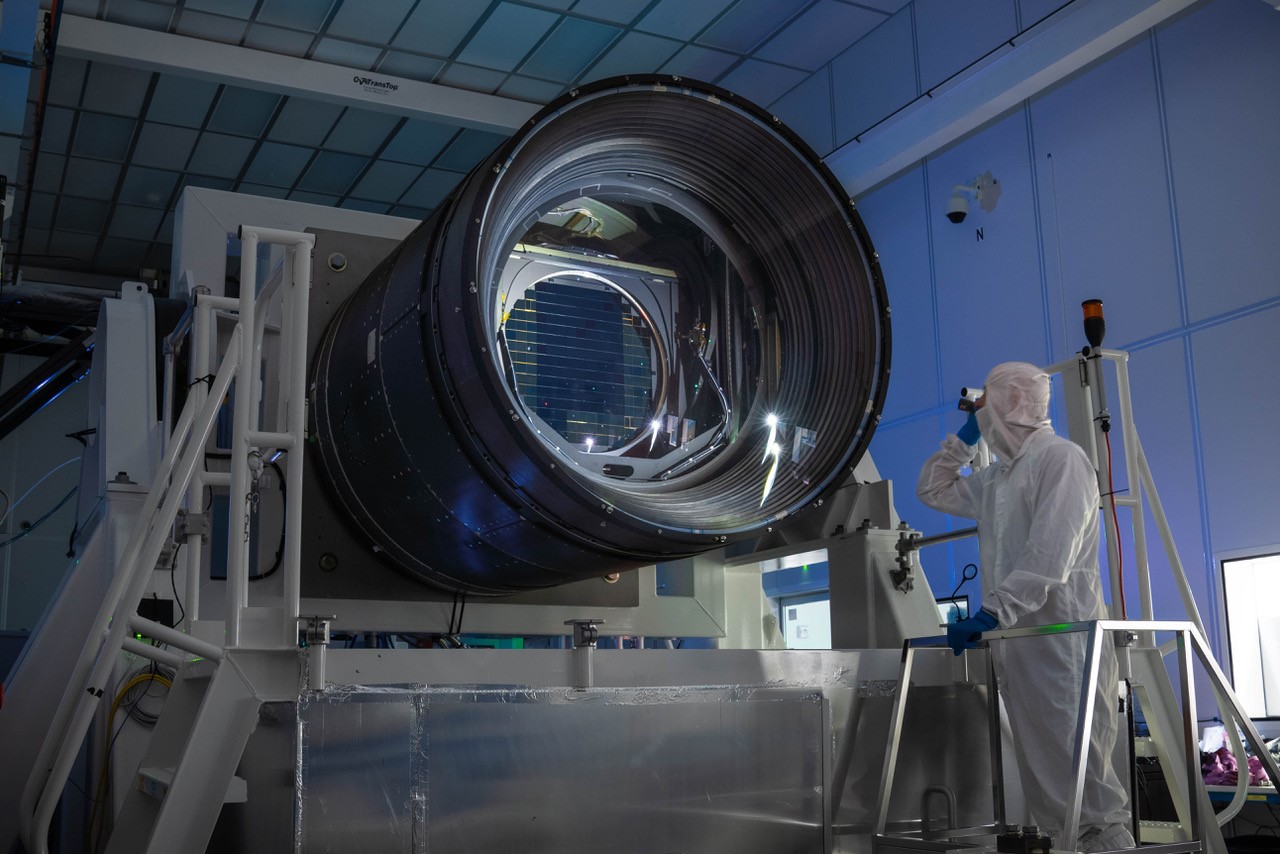
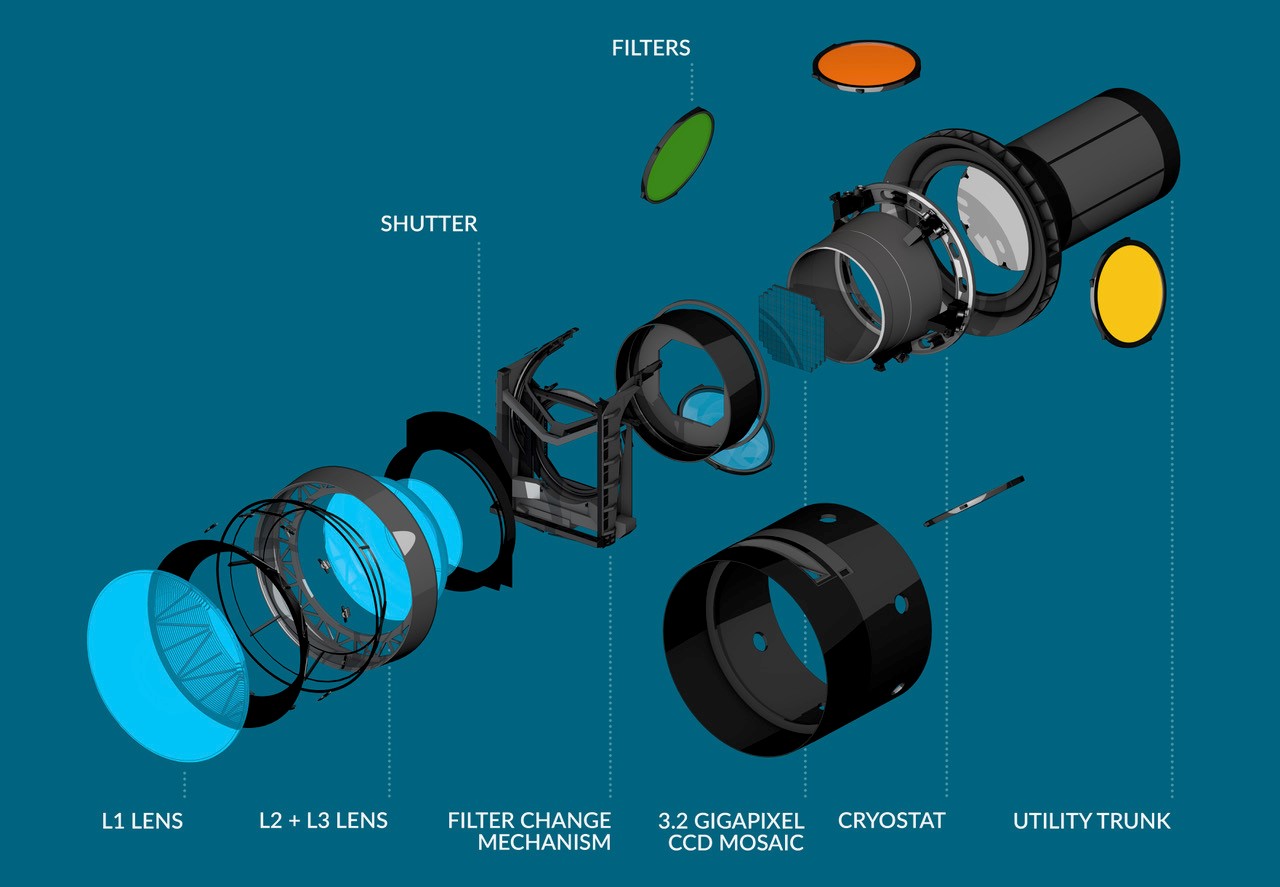
- 1Legacy Survey of Space and Time.
- 2Named after the American astronomer Vera C. Rubin, who was the first to establish the presence of dark matter in galaxies.
- 3This project is led by the U.S. Department of Energy’s (DoE) SLAC National Accelerator Laboratory, operated by Stanford University in California.
- 4From the IN2P3 Computing Centre (CNRS), the Marseille Particle Physics Centre (CNRS / Aix-Marseille Université), the Astroparticle and Cosmology Laboratory (CNRS / CEA / Université Paris Cité / Observatoire de Paris), the Annecy Laboratory of Particle Physics (CNRS / Université Savoie Mont-Blanc), the Clermont Auvergne Physics Laboratory (CNRS / Université Clermont Auvergne), the Subatomic Physics and Cosmology Laboratory (CNRS / Université Grenoble Alpes), the Nuclear Physics and High Energy Laboratory (CNRS / Sorbonne Université / Université Paris Cité), the Institute of Physics of the 2 Infinities in Lyon (CNRS / Université Claude Bernard Lyon 1), the Laboratory of the Physics of the 2 Infinities Irène Joliot-Curie (CNRS / Université Paris-Saclay / Université Paris-Cité), and the Montpellier Universe and Particles Laboratory (CNRS / Université de Montpellier).
- 5All of the images taken by the telescope will be stored in Lyon on the servers of the IN2P3 Computing Centre (CNRS).
- 6The telescope of this observatory has three mirrors, including a primary one with a diameter of 8.4 metres and a unique design providing an exceptionally broad field of vision, all while conserving a compact form enabling it to quickly move across the surface of the sky.
